© 2024 ENECA
BIM
WHAT IS LOD?
In Building Information Modeling , LOD is used to describe the level of detail of model elements that are used in the design, construction, and upkeep of buildings.
WHAT IS LOD?
In Building Information Modeling , LOD is used to describe the level of detail of model elements that are used in the design, construction, and upkeep of buildings.

There are typically five levels of LOD
LOD 100 is the lowest level of detail that is usually used at the initial design stage when building details have not yet been defined. At this level, the model can represent the rough outline of the building. The LOD 100 level of detail in BIM is typically used at the initial design stage and involves the creation of a crude three-dimensional building model that represents the overall shape and skyline of the building. This means that at this level of detail, the model can only contain the basic elements of a building, such as walls, floors, ceilings, and roofs, without giving details on specific dimensions, shapes, and characteristics. LOD 100 is often used as a starting point for the development of more detailed building models at higher levels of detail. During the development of the project at LOD 100, the analysis and definition of spatial restrictions, the design of general volumetric solutions, and the arrangement of functional areas are carried out. This level of detail allows you to get an idea of the shape and dimensions of the building, as well as its general design.
LOD 100 is the lowest level of detail that is usually used at the initial design stage when building details have not yet been defined. At this level, the model can represent the rough outline of the building. The LOD 100 level of detail in BIM is typically used at the initial design stage and involves the creation of a crude three-dimensional building model that represents the overall shape and skyline of the building. This means that at this level of detail, the model can only contain the basic elements of a building, such as walls, floors, ceilings, and roofs, without giving details on specific dimensions, shapes, and characteristics. LOD 100 is often used as a starting point for the development of more detailed building models at higher levels of detail. During the development of the project at LOD 100, the analysis and definition of spatial restrictions, the design of general volumetric solutions, and the arrangement of functional areas are carried out. This level of detail allows you to get an idea of the shape and dimensions of the building, as well as its general design.

LOD 200 is used at the conceptual design stage and may include elements such as walls, windows, and doors, without any specific dimensions or features. The LOD 200 level of detail in building information modeling (BIM) is used at a more advanced stage of design, when the main characteristics of the building have already been defined. At this level of detail, the building model can contain more specific geometric information than at LOD 100. Typically, at LOD 200, the building model includes more specific elements such as walls, windows, doors, partitions, stairs, and other elements needed to get the overall picture of the building. At the same time, the specific dimensions and characteristics of the elements may not be determined yet. LOD 200 can also include various design options and design concepts for walls, floor and ceiling materials, window shapes, etc. At LOD 200 level, the detailed design of the building takes place, taking into account the objectives and functional tasks that the building must fulfill. This allows developers to get a clearer idea of the building and make additional changes and adjustments before moving on to a higher level of detail.

LOD 300 is used during the detailed design stage and includes the detailed geometry of building elements, including dimensions, shapes, and exposure. The LOD 300 level of detail in Building Information Modeling (BIM) is typically achieved during the detailed design stage. At this level of detail, the building model becomes even more detailed and contains more accurate information on the size and shape of building elements. At LOD 300 level, the building model contains information about the specific dimensions and characteristics of building elements such as windows, doors, walls, partitions, stairs, and others. In addition, at this level of detail, the model may include information about the construction of the building elements, such as the type and quantity of materials used for the wall, or the connection details of the various elements. LOD 300 may also contain information about the location of elements in the building and possible problems that may arise during the construction or upkeep of the building. For example, at this level of detail, the model can include information about the location of electrical and plumbing systems, which allows you to anticipate and resolve possible collisions between them. The LOD 300 may also include material quality information and cost estimates, which can be useful for project budget planning and material selection decisions.

LOD 400 is the level of detail used to create models that contain construction information such as dimensions, materials, weights, and strengths of building elements. The LOD 400 level of detail in Building Information Modeling (BIM) is typically achieved during the design and construction documentation stage. At this level of detail, the building model becomes even more accurate and contains more detailed information about the building structure, equipment, and the materials. At LOD 400 level, the building model contains detailed information about the dimensions and characteristics of each building element, as well as information about its design and installation method. All of that allows designers/developers to get precise information about the way each building element should be manufactured and installed. LOD 400 also includes information about the materials and equipment that will be used in the construction of the building. This may include information about the types and characteristics of materials, equipment and machinery that will be used on the site. At this level of detail, the building model can contain additional information, such as installation instructions for each building element, as well as information about the way various types of work will be performed. LOD 400 may also contain site safety information, including potential hazards and instructions to avoid them.

LOD 500. This level of detail is used to create models that contain building upkeep information, including maintenance and repair data. Each level of detail has its own characteristics and purpose. Defining LOD level of detail for each model element helps to determine what information should be included in the model at each design stage, and what information should be available for the future users of the model. The LOD 500 level of detail in Building Information Modeling (BIM) is the final stage that is reached after a building is completed and commissioned. At this level of detail, the building model contains complete and accurate information about each building element and its characteristics. At LOD 500 level, the building model contains detailed information about each building element, including information about its condition, upkeep, and maintenance needs. This allows management companies and technical services to receive accurate information on how to maintain and repair each element of the building. LOD 500 also includes building maintenance and repair information, including instructions for replacing and repairing each building element, as well as information on spare pieces and materials. At this level of detail, a building model can contain information about the safety and environmental performance of the building, including information about fire safety systems, ventilation and air conditioning systems, electrical supply, water supply and sewerage. LOD 500 may also contain information about the life cycle of a building, including information about the projected lifespan of the building, the need for repairs and maintenance, and an estimate of the cost of upkeeping the building throughout its life cycle.
More articles:

